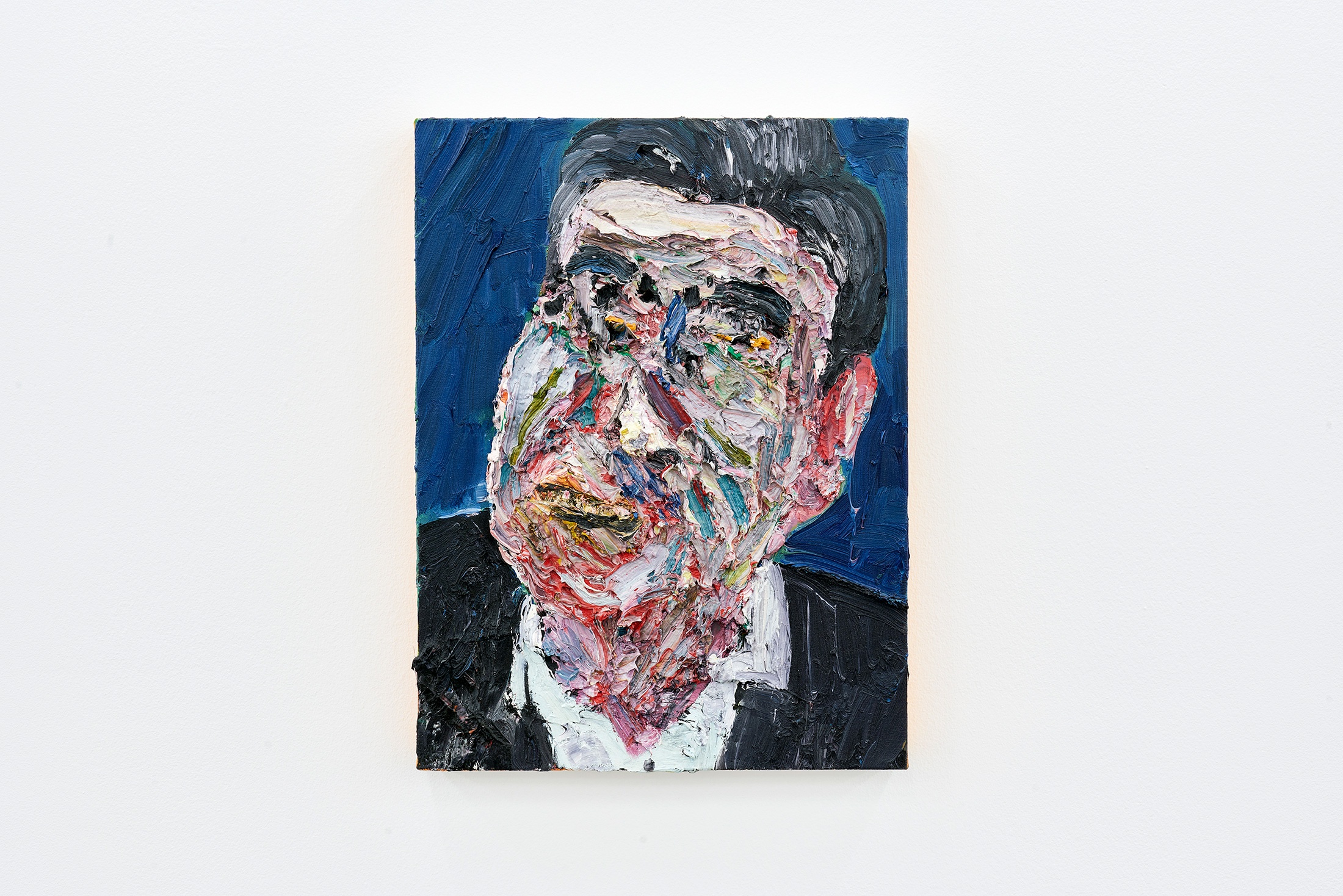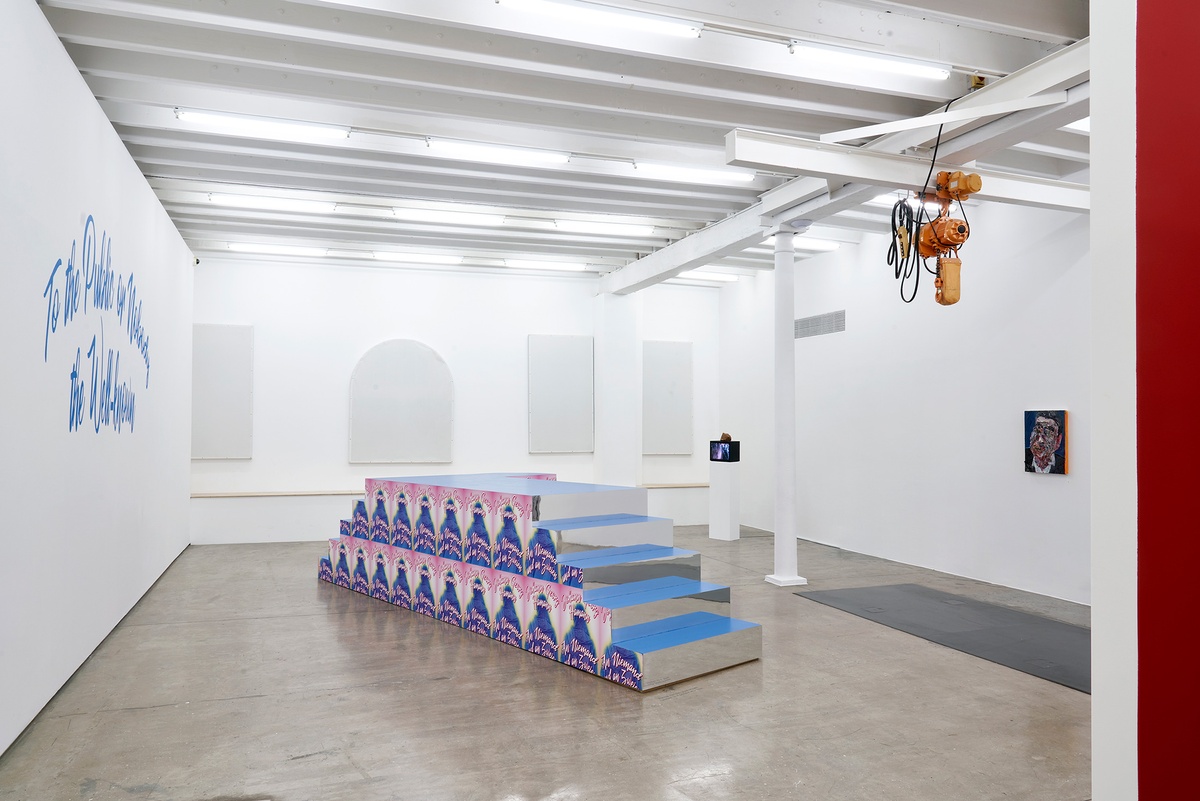Georgina Gratrix

That The Insomniac has been Francisco Berzunza’s Whatsapp profile picture for years is a matter of some curiosity to Gratrix. She has painted another portrait of Berzunza, one she felt was pleasing enough to present as a gift to his mother. That painting hangs pride of place in his family home. This one, the artist refers to as “an attic work,” strangely discomfiting, pale, “almost Frankensteiny” (a parallel, one imagines, to the portrait of Dorian Gray – that other painting in an attic – in which the protagonist persists untainted by age and action while his likeness grows increasingly deranged). Most of the preparation for You to Me, Me to You occurred online, the curator based in Mexico City while A4’s team worked on the ground. Calling this portrait his “digital replica,” Berzunza wondered, “is this me communicating, or is this digital construction of me communicating?” It was thus that he (or the digital ‘he’) summoned the work from Gratrix’s storage, claiming the portrait had become, “essential to my persona… It’s the face many people associate with me.” That painted face, Gratrix suggests, looks sleepless, on edge – even crazed. In a conversation with Berzunza about his intentions for the exhibition, Gratrix asked him: “Why does your love life inspire death?” To which he replied: “Maybe my love life is death.” Or, if not death itself, perhaps a long sleepless night. Considering The Insomniac in the context of You to Me, Me to You, this writer is reminded of a poem by Rumi (a poem that is cited, in a different context and for another work, by the artist James Webb, who also happened to be present in this exhibition) –
When I am with you, we stay up all night.
When you’re not here, I can’t go to sleep.
Praise God for those two insomnias!
And the difference between them.
b.1982, Mexico City
Fleshy, gunky, meaty, gooey – these are among the adjectives with which Georgina Gratrix describes her paintings. Through the use of recurring characters and motifs, the artist works tirelessly against repetition. She describes portraiture as the discipline of “painting two eyes, a nose, and a mouth. How do you keep making that into something?” For Gratrix, the challenge, to “never feel like I’ve already made this painting,” is the game – one in which the artist is compelled to stretch the arena of portraiture and still-life in canvases filled to the brim with paint that create something more than likeness. “A relationship is a third entity. It is never just, ‘Who is this person?’ but ‘Who is this person, to me?’” When asked what she would consider to be a flattering portrait of her subject, Gratrix answers, “That isn’t really my area of expertise.” Instead, she is interested in how people choose to represent themselves, working, more often, from photographs that are easily Google-able, and the selfies that swamp social media platforms. Often, she only feels a painting coming together in a moment of erasure, of wiping away eyes painted over eyes, or an easy gesture of pulling apart any tendency from a subject to save face. Proposing a revisionist approach to the tired and self-serious genres of historical painting, those “stodgy, stoic canvases by so many important men,” in the artist’s words, the resulting paintings are at once seductive and unsettling; tactile for their textured surface, disconcerting for their image.





